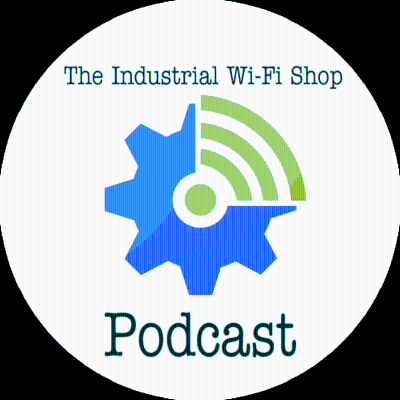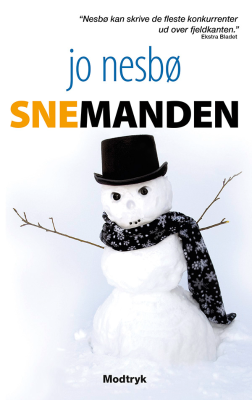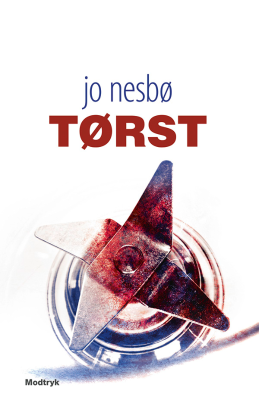
The Industrial Wi-Fi Shop Podcast
engelsk
Videnskab & teknologi
Begrænset tilbud
3 måneder kun 9 kr.
Derefter 99 kr. / månedIngen binding.
- 20 lydbogstimer pr. måned
- Podcasts kun på Podimo
- Gratis podcasts
Læs mere The Industrial Wi-Fi Shop Podcast
Manufacturing and industrial environments provide their own unique challanges for wireless communications. Harsh conditions, both indoors and out, create a daunting task for engineers work through. This is where we come to discuss those challenges, share ideas and help one another out. My name is Scott McNeil and welcome to the Industrial Wi-Fi Shop
Alle episoder
23 episoderThe Industrial Wi-Fi Shop Podcast – Ep. 21 HaLow Can You Go!
Free 3D Printer Plans! * Oscium WiPry790x and Clarity/Lucid DIY bracket posted on Thingiverse. Bring your own hair ties. I have been informed that Printables is better so I will post it there soon. * https://www.thingiverse.com/thing:6991943 [https://www.thingiverse.com/thing:6991943] Upcoming Events! * Wi-Co * November 6th – Washington, DC * November 10th – Dublin, Ireland * November 19th – Utrecht, Netherlands * WLPC – Phoenix AZ USA 2026 * Main Conference: 17-19 FEB 2026 * Boot Camps: 14-16 FEB 2026 * Voting for presentations is open * Embedded World North America Annaheim, California * Nov 4-6, Gateworks will be doing a fireside chat with Morse Micro and U-Blox discussing development of AMRs (AMR = Autonomous Mobile Robots) Jeremy – I submitted two presentation options for WLPC Phoenix! * Common Industrial Deployments for complicated WLANS * Redundant Wireless Links: PRP over wireless, MPO, and other methods. * Voting is open until 11/14 we will put a link in the show notes and check linkedin. * https://www.surveymonkey.com/r/WLPCPHX2026 [https://www.surveymonkey.com/r/WLPCPHX2026] HaLow Outdoor Site Survey Deep Dive * https://www.thewlpc.com/presentations/802-11ah-wi-fi-halow-outdoor-site-survey-deep-dive-phx-26 [https://www.thewlpc.com/presentations/802-11ah-wi-fi-halow-outdoor-site-survey-deep-dive-phx-26] HaLow Development kit from Gateworks * https://www.gateworks.com/products/single-board-computer-development-kits/wifi-halow-development-kit/ [https://www.gateworks.com/products/single-board-computer-development-kits/wifi-halow-development-kit/] Morse Micro Community * https://community.morsemicro.com/ [https://community.morsemicro.com/] Don’t forget to check out our new document library with free valuable downloadable content! * Miliwatt to dBm conversion table * Wireless IoT reference charts for types and security * Best practice white papers to help you stay on your game IWS Episode 21 – HaLow Can You Go HaLow Basics * Wi‑Fi HaLow is based on IEEE 802.11ah, a standard in the Wi‑Fi family that extends connectivity for IoT and machine‑to‑machine devices . * It operates in Sub‑1 GHz frequency bands ( 902–928 MHz in the U.S.), enabling long‑range communication—up to about a1 km outdoors and superior object penetration . * HaLow uses narrow channel widths (1–16 MHz), which improve range and energy efficiency compared to traditional Wi‑Fi that uses 20–160 MHz . * Supported modulation schemes include BPSK, QPSK, 16‑QAM, 64‑QAM, and 256‑QAM, offering adaptable data rates from 150 Kbps to 80 Mbps (theoretical with 4 spatial streams) depending on channel width and link quality . * It relies on OFDM (Orthogonal Frequency Division Multiplexing) to reduce interference and maintain link stability across multiple subcarriers . * Features like Target Wake Time (TWT) and long sleep cycles keep devices in low‑power mode most of the time, drastically extending battery life . * Security uses WPA3 and Wi‑Fi Enhanced Open, comparable to current enterprise‑grade Wi‑Fi . Rumor has it you can link 88 of them together and push 1.21 Gigawatts Frequencies * 900MHz * USA: 902-928 MHz * Australia, New Zealand: 915–928 MHz * Japan: 916.5–927.5 MHz and 920.5–921.5 MHz…trials underway to open up spectrum at 850MHz across Japan for Wi-Fi HaLow * China: 755–787 MHz or sometimes 779–787 MHz * Korea: 917.5–923 MHz and 925–931 MHz * Vietnam: 918–923 MHz * Europe * Wi-Fi HaLow (IEEE 802.11ah) in Europe operates mainly within the 863–868 MHz sub-GHz ISM band, which offers significantly less spectrum compared to the U.S., creating certain limitations and regulatory constraints. * The European channel plan allocates just 5 MHz of spectrum in the 863–868 MHz range, split into five 1 MHz channels—much narrower than the U.S. allocation. * In some parts of Europe, an additional 2 MHz covering 915.8–917.4 MHz and 917.4–919.4 MHz is available for two additional channels, but full uptake is limited. * Channels typically available: 1 MHz and 2 MHz channel widths only. * Duty Cycle and Power Limitations * European regulations (ETSI/EN 2202, ERC Recommendation 70-03) strictly limit duty cycles—access points usually have a duty cycle restriction of 10%, while client stations are often restricted to 2.8%. * These limits mean Wi-Fi HaLow data transmissions can only occupy the airwaves for a small fraction of time, making it less suitable for continuous, high-bandwidth uses like video streaming What does HaLow look like on spectrum analysis? [https://industrialwifishop.com/wp-content/uploads/2025/11/image-1.png?w=1024] HaLow testing at a 2MHz wide channel [https://industrialwifishop.com/wp-content/uploads/2025/11/image-3.png?w=1024] HaLow testing at a 4MHz wide channel [https://industrialwifishop.com/wp-content/uploads/2025/11/image-2.png?w=1024] HaLow testing at a 8MHz wide channel [https://industrialwifishop.com/wp-content/uploads/2025/11/image.png?w=1024] “I’m fine to make the offer that the first 10 people to screen grab this image and send it out on their socials to their customers to see what their customers would like to do with the extra data throughput we can offer at hundreds of meters of distance…will get 2 x HaLowLink 1 devices from me to start their Wi-Fi HaLow journey. Just ask them to tag me (Andy), Morse Micro and the Industrial Wi-Fi Shop of course!!!” – Andy McFarlane Just right click and “save as” for the image above! Don’t forget to tag Scott & Jeremy too! Let’s talk Use Cases / Applications * Worth initially positioning Wi-Fi HaLow as the connectivity power behind IoT 2.0 … .being clear on how the first generation of IoT use cases opened up, what their restrictions are and how Wi-Fi HaLow is underpinning a new generation of higher throughput use cases. * Commercial / Enterprise * Video Security Cameras * Smart Meters (Electricity meters rather than water or gas meters) * Smart Buildings (Door locks, behind the meter devices ref power load management) * Industrial / Manufacturing * AMR’s both inside the factory/warehouse and outdoors * Grid monitoring * Transportation: Rail, Fleets, Asset Tracking * UAV * Retail security, asset tracking and ESL(Electronic Shelf Labels) Are there any verticals we missed? Doing some AI digging (fast becoming a secondary hobby of mine): ********** Several HaLow vendors have established partnerships with major industrial control companies like ABB, Honeywell, and Rockwell Automation to deploy robust industrial IoT solutions. NOTABLE HALOW VENDOR PARTNERSHIPS * Morse Micro and Gateworks: This partnership focuses on bringing Wi-Fi HaLow to industrial IoT environments including smart factories, transportation systems, and energy infrastructure. Their collaboration emphasizes secure, long-range, low-power wireless connectivity tailored for industrial settings, which aligns with the needs of companies like ABB and Rockwell Automation. ********** Gateworks (Whole USA Solution) How does this figure in with tariffs, MM and working with customers with something like a no China policy? ********** Morse Micro and Gateworks are collaborating on projects that deliver industrial-grade Wi-Fi HaLow (IEEE 802.11ah) connectivity designed specifically for tough industrial environments such as smart factories, transportation systems, and energy infrastructure. Together with Silex Technology, they have developed a high-performance ecosystem that enables secure, low-power, long-range wireless connectivity ideally suited for: * Large sprawling industrial facilities and remote infrastructure with Wi-Fi coverage exceeding 1 km * Battery-powered sensors and devices requiring ultra-low power consumption * Smart factory applications including wireless sensors, automated mobile robotics, and machine health monitoring * Smart transportation projects such as train safety systems, fleet management, and predictive maintenance * Smart energy solutions including grid management, solar inverters, wireless EV charging, and smart meters Key technology developed by the partnership includes the GW16159 industrial-grade M.2 Wi-Fi HaLow card, manufactured by Gateworks using Morse Micro’s MM6108 SoC. Gateworks also released the GW11056 Development Kit for accelerated evaluation and prototyping, enabling faster time-to-market for industrial automation and monitoring use cases. Additionally, here’s a few links you might like to use. * Here’s MM’s community page I referenced at the end of the podcast. https://community.morsemicro.com/ [https://community.morsemicro.com/] * Here’s MM’s GitHub site. https://github.com/MorseMicro [https://github.com/MorseMicro] * Here’s a recently uploaded unboxing video for one of our HaLowLink test devices… https://www.youtube.com/watch?v=ISVt7QTAP_0&t=22s [https://www.youtube.com/watch?v=ISVt7QTAP_0&t=22s] * Plus our YouTube page… https://www.youtube.com/@morsemicro1641 [https://www.youtube.com/@morsemicro1641] * Same for Instagram… https://www.instagram.com/morse.micro [https://www.instagram.com/morse.micro] * And for those preferring more brain rot in their lives…our TikTok page… https://www.tiktok.com/@morse.micro [https://www.tiktok.com/@morse.micro] ********** If you would like to connect with Kelly Peralta or learn more about her employer, Gateworks, then check the following: Kelly Peralta – https://www.linkedin.com/in/kelly-peralta-ab6ab23/ [https://www.linkedin.com/in/kelly-peralta-ab6ab23/] Gateworks – https://www.gateworks.com/ [https://www.gateworks.com/] If you would like to connect with Andy McFarlane or learn more about his employer, Morse Micro, then check the following: Andy McFarlane – https://www.linkedin.com/in/andymcf/ [https://www.linkedin.com/in/andymcf/] Morse Micro – https://www.morsemicro.com/ [https://www.morsemicro.com/] * Here’s our GitHub site. https://github.com/MorseMicro [https://github.com/MorseMicro] * Here’s a recently uploaded unboxing video for one of our HaLowLink test devices… https://www.youtube.com/watch?v=ISVt7QTAP_0&t=22s [https://www.youtube.com/watch?v=ISVt7QTAP_0&t=22s] * Plus our YouTube page… https://www.youtube.com/@morsemicro1641 [https://www.youtube.com/@morsemicro1641] * Same for Instagram… https://www.instagram.com/morse.micro [https://www.instagram.com/morse.micro] * And for those preferring more brain rot in their lives…our tiktok page… https://www.tiktok.com/@morse.micro [https://www.tiktok.com/@morse.micro] If you would like to connect with Scott or learn more about his employer, Global Process Automation (GPA), then check the following: Scott McNeil – https://www.linkedin.com/in/americanmcneil/ [https://www.linkedin.com/in/americanmcneil/] GPA – https://www.global-business.net/ [https://www.global-business.net/] If you would like to connect with Jeremy or learn more about his employer, Prism Systems Inc, then check the following: Jeremy Baker – https://www.linkedin.com/in/jeremyabaker/ [https://www.linkedin.com/in/jeremyabaker/] Prism Systems Inc – https://www.prismsystems.com/ [https://www.prismsystems.com/]
The Industrial Wi-Fi Shop Podcast – Ep. 20 900MHz or Bust!
Free 3D Printer Plans! * Oscium WiPry790x and Clarity/Lucid DIY bracket posted on Thingiverse. Bring your own hair ties. I have been informed Printables is better so I will post there soon. * https://www.thingiverse.com/thing:6991943 [https://www.thingiverse.com/thing:6991943] Upcoming Events! * Wi-Co * October 1st – Montreal, Canada * November 6th – Washington, DC * November 19th – Utrecht, Netherlands * WLPC * Prague, Czech Republic * October 11-13 – boot camps * October 14-16 – main conference Keith Jones CEO of Prism Systems has provided 2 license codes for the PrismStats Live software (iOS) a URWB commissioning tool. Helpful for spot checking, parsing, and troubleshooting Cisco URWB Fluidity deployments created by Prism Systems! Email Jeremy if interested! Don’t forget to check out our new document library with free valuable downloadable content to help you in your wireless endeavors in the industrial and manufacturing air space! On with the show! IWS Episode 20 – 900MHz or Bust * A little bit about 900MHz in general * ISM frequency space * 802.11 channel designations * 902 – 928 MHz * 1 MHz wide channels * General dynamics of 900MHz * distances/ranges * Penetration values * Power consumption * Esteem Horizon 900 radios * Channel structure * Channel widths * 5, 10 and 20 MHz wide options * Realistic bandwidth and constraints * Up to 72mbps at 20 MHz wide channel * OFDM (Orthogonal Frequency-Division Multiplexing – I wanted to sound smart) * Power * 802.3at PoE+ * 12VDC Direct * IndustrialMESH and path redundancy * What is IndustrialMESH? * How is it handled * Self-Healing, redundant, backup communication paths – Automatic Switching * Uses standard network Spanning Tree Protocol (STP, RSTP, MSTP) * Routes can be configured, controlled and prioritized by user or Auto-MESHing (“Rapid Ready” Mode of operation – similar to an ad-hoc network.) * Can this be configured dynamic or does it have to be manually configured/static. (See above) * Additionally, the MESH Bridge links can be individually configured for always up status or dynamically controlled based upon RSSI thresholds * Security * Proprietary communication protocol * Bridging * Encryption * WEP (64 or 128 bit) * TKIP * AES-CCMP (128 or 256 bit) * AP / Client Modes * WPA * PSK * Enterprise 802.1x w/RADIUS * WPA2 * PSK * Enterprise 802.1x w/RADIUS * AP Router / Client * Access Point Mode * Client Mode * Masquerade mode * Access point mode * Client client * Station Bridge Mode * Mobile Client – Bridge functionality * Twin Bridge Mode * Secondary Bridge/MESH network * Common Hardware * Isolated Traffic [https://industrialwifishop.com/wp-content/uploads/2025/09/image.png?w=1024]Wi-Fi HaLow 4 MHz wide broadcast [https://industrialwifishop.com/wp-content/uploads/2025/09/image-1.png?w=1024]Esteem 5 MHz wide broadcast * Compare/contrast how Esteem works vs Wi-Fi HaLow * Frequency utilization * Efficiency * What it looks like in spec-an * Primary use cases / verticles * Agriculture * Water / Waste water systems * Mining * Oil & gas / Energy * Factory floor * AGV/Autonomous Vehicles * What other offerings does Esteem have? * Models/operation modes * Frequency usages * Use cases Do you have ability to cover 5.9, plans for 6 GHz? With the industrial verticals you guys operate in, what you see coming in the future of industrial wireless applications. If you would like to connect with Dan Tolley, Eric Marske or learn more about their employer, Esteem, then check the following: Dan Tolley – https://www.linkedin.com/in/americanmcneil/https://www.linkedin.com/in/danieltolley/ [https://www.linkedin.com/in/danieltolley/] Eric Marske – https://www.linkedin.com/in/eric-marske-51029b21/ [https://www.linkedin.com/in/eric-marske-51029b21/] Esteem – https://www.global-business.net/https://esteem.com/ [https://esteem.com/] If you would like to connect with Scott or learn more about his employer, Global Process Automation (GPA), then check the following: Scott McNeil – https://www.linkedin.com/in/americanmcneil/ [https://www.linkedin.com/in/americanmcneil/] GPA – https://www.global-business.net/ [https://www.global-business.net/] If you would like to connect with Jeremy or learn more about his employer, Prism Systems Inc, then check the following: Jeremy Baker – https://www.linkedin.com/in/jeremyabaker/ [https://www.linkedin.com/in/jeremyabaker/] Prism Systems Inc – https://www.prismsystems.com/ [https://www.prismsystems.com/]
The Industrial Wi-Fi Shop Podcast – Ep. 19 CURWB Appeal!
IWS Episode 19 Show Notes – C-URWB Appeal! Free 3D Printer Plans! * Oscium WiPry790x and Clarity/Lucid DIY bracket posted on Thingiverse. Bring your own hair ties. I have been informed Printables is better so I will post there soon. * https://www.thingiverse.com/thing:6991943 [https://www.thingiverse.com/thing:6991943] Upcoming Events! * Wi-Co * September 10th – UK South / london * October 1st – Montreal, Canada * November 6th – Washington, DC * November 19th – Utrecht, Netherlands * WLPC * Valencia, Spain * September 12-14 – boot camps * September 15-16 – main conference * Prague, Czech Republic * October 11-13 – boot camps * October 14-16 – main conference Keith Jones CEO of Prism Systems has provided 2 license codes for the PrismStats Live software (iOS) a URWB commissioning tool. Helpful for spot checking, parsing, and troubleshooting Cisco URWB Fluidity deployments created by Prism Systems! If you are interested in one of these two license keys, please email Jeremy at Jeremy@industrialwifishop.com Don’t forget to check out our new document library with free valuable downloadable content to help you in your wireless endeavors in the industrial and manufacturing air space! On with the show! IWS Episode 19 – C-URWB Appeal! * URWB technology was first introduced in the market in 2005 by Fluidmesh Networks, focusing on ultra-low latency and ultra-reliability for mission-critical wireless connectivity. * Cisco acquired Fluidmesh Networks in 2020, integrating URWB technology into its portfolio and advancing its capabilities alongside Wi-Fi technology. * URWB uses a specialized implementation of MPLS over wireless links to enable very low latency and reliable transmission in mobility scenarios, supporting “make-before-break” handovers for seamless connections to moving vehicles. *** What is MPLS! *** Multiprotocol Label Switching, is a networking technology that uses labels to route data more packets efficiently. MPLS works by attaching a small “label” to each data packet as it enters the network. This label acts like a shortcut, indicating the path the packet should take through the network. Instead of routers making complex routing decisions based on destination IP addresses, they can quickly forward packets based on the attached label, leading to faster data transmission * The technology features patented Multipath Operations (MPO), which delivers uninterrupted connectivity by duplicating high-priority traffic on multiple uncorrelated frequency paths, dramatically reducing packet loss and latency. This provides greater redundancy for implementations. * URWB has been widely adopted in various industries including mining, entertainment, utilities, ports, manufacturing, rail, and smart cities, supporting heavy applications like autonomous vehicles, remote-controlled cranes, and industrial automation. * In 2025, Cisco announced combining URWB functionality with Wi-Fi capabilities in its access points, allowing unified infrastructure and management to support both technologies simultaneously, thus simplifying deployments and reducing operational overhead. C-URWB is NOT 802.11 !!! – although it is built upon and extends the 802.11 technology foundation. * 802.11 is mainly an access technology for end-user devices like computers and smartphones, URWB functions as a wireless backhaul technology. It connects network infrastructure elements (such as access points, controllers, and industrial devices) with managed, optimized communication links. * URWB offers features beyond standard Wi-Fi, including seamless “make-before-break” handoffs, multipath operations (sending duplicate packets over separate paths to ensure reliability), and RF interference mitigation for highly reliable connectivity in challenging environments. * Has two flavors: FluidMax which is the backhaul (fixed point) and Fluidity where mobile clients need to roam as in rail or warehouse AGVs. Igor – been at Cisco 5 years as a pre-sales engineer, came over as part of the Fluidmesh acquisition in 2020. Prior to that, worked in the transportation sector as a systems integrator for airport people, movers and commuter rail systems for about 7 years. Back in 2012 i was tasked with finding a commercial off the shelf wireless product that would be good for mobility and wire-like roaming for airport people movers. It was at that time we were testing cisco, fluidmesh, and a few other vendors to see what would meet our success criteria as our wireless product for our train systems. We initially went with cisco 3602Es and 5500 wlc controllers running WGB and pre .11r neighbor table configurations…with later projects shifting to Fluidmesh, Fluidity architectures, and that seamless roaming, high-throughput and low latency connectivity over wireless. Matt – been at Cisco for 18 years, pre-sales engineer supporting lots of customers – financial, professional services, hosted collaboration, shuffled to the IoT team about 4 years ago. I grew up farming and live on a small farm now, about 60 acres give or take. I have the property covered in Wifi+CURWB and have hundreds of IoT devices on-net across the property. Neck deep in all things RF and wireless – lora, 433, BLE, you name it and i’m interested. 4400, 5500, 9800, I’ve worked with all the things. What is URWB and why should we care about it? * High level, it’s an ethernet backhaul technology over wireless, which utilizes the unlicensed 5 GHz and eventually 6 GHz spectrum with our recent announcement with catalyst 9800 controllers * It’s great for fixed point to point point, multipoint and mixed backhaul for static environments with a set and forget antenna alignment and stable RSSI * As well as mobility connectivity, to connect moving assets such as trains, utility vehicles, ship the shore cranes, mining dozers, and AGVs back to their OT edges and cores What is the next big release on the roadmap? * 17.18.1 * Next would be Catalyst Center support and configuration…sometime next year * Currently, this is considered a beta release, with the gold star release firmware coming out in 3-6 months. * Highly encourage downloading and playing with it. What problems will the 802.11/URWB simultaneous modes solve? * 1 box solution for reliable WiFi and wireless backhaul to Cisco controllers via URWB * Providing a cheaper solution (vs 2 box), less SmartNet and DNA license seats…and a true commercial grade wireless backhaul product on a proven Cisco Catalyst wireless platform. * Digital divide or equity projects, where you want wi fi for underserved areas (mostly outdoor) * Similarly, providing Wi-Fi on moving vehicles. Take for example a commuter rail system that has public facing Wi-Fi in the vehicle and an external URWB Fluidity backhaul to the trackside network. Couple that with urwb seamless roaming, you’ll have bidirectional high-throughput, and low-latency connectivity for Wi-Fi passenger use. * Wi fi hotspots in typical IoT vehicles. Think of your outdoor utility vehicles, container handler vehicles at a port. Maybe it’s a forklift running over urwb and then providing wi fi connectivity within a hundred foot radius of that parked forklift for tablet, cell phone connectivity, whatever is needed to manage the day to day operations and manufacturing process at that site. * Overhead crane connectivity in manufacturing environments to backhaul fisheye cameras and PLC comms. Are there any plans to provide beacons so standard tools can be used for RF Validation, or is Telemetry king? * For now, telemetry is king, and using software tools such as PrismStats to capture, analyze and post process the telemetry stream for both fixed and mobile connectivity. Nothing beats real empirical measurements in RF environments, and PrismStats is a quick, easy, cheap and reliable way to get this data in the hands of the engineers. * TBD, I’m sure there will be better hooks into AI-RRM, Wireless Config Analyzers, and other standard features you see with Cisco Wireless, though it’ll take some time to fully integrate to the bells and whistles we offer with Wifi. What are the most useful documents you reference even at your current level of expertise? * Right now, digging into the Cisco Live On Demand Library. Lots of great wi fi and u r w b content there…and goes back a few years. * Unplugged Connectivity YouTube channel. 100s of videos and episodes about all things Cisco Catalyst and Meraki Wireless…and a few URWB sessions there * Cisco TDM, Ordering Guides, and CVDs * Google AI searches…digging through all of the public facing configuration guides; hardware install guides, datasheets, etc to answer very specific RF questions. Tell us about an interesting project you have worked on and how URWB solved the complications the customer faced. Igor – Digital divide during covid using Meraki MRs for wifi and FM URWB radios to underserved areas in Dallas-Fort Worth, as well as City of Wake Forest. PtMP and relay architectures mostly. Something that can also be replicated with outdoor campus connectivity we see in hospitals, colleges, and corporate campuses. With DoTs, lots of intersection connectivity to traffic management solutions and cctv cameras on those tall vertical assets. So next time you are at a red light, look up and you might see a square panel used as the directional backhaul to another traffic light a quarter mile away. Indoor AGV connectivity has also been a top use case with fluidity, so various customers there using fluidity, and in some cases, using wi fi wgb for not so mission, critical connectivity. MPO is a great benefit here, with packet duplication/deduplication of that mission-critical PLC. Ports and terminals, fluidity, connectivity to these vehicles using multiple 90 degree horn antennas off of those high mast light poles to provide connectivity for terminal operating system (tos) applications. Train to ground for mission-critical traffic backhaul, as well as not so mission-critical wifi ap backhaul, passenger signage and VoIP e-tel Open pit mining, combination of fixed PtP and PtMP backhaul to temporary trailer setups, and then configuring fluidity to those large mining vehicles. Great for ad hoc environments with constantly changing topology and redesigning with line of sight in mind. Jeremy- I really like the new hardware, no more overly protective hiding of my M12 cable. Use cases & Stories * Scott – I deployed what was originally a FluidMesh system for a wood chip yard for a paper mill. Four giant automated machines for the dispersal and reclamation of wood chips for the beginning of the paper making process. Two monster chip “Stackers” and two giant chip “Reclaimers” [https://lh7-rt.googleusercontent.com/docsz/AD_4nXf4bWDNIEYNEiMySkRG7SkY7x6zkSKhDEZOs0NoOI7SYAPb2BbKw7wNTkwLDRCB9QtUVpg70hsFytScnB25mDabJR3AHeNCR8IWeHPq345Jx4v6OHBipxCQoUWPeRpnmitJQNHuQw?key=uuc5vbr6LrvXtKlgCJYRjQ] * Deployment ran great for several years. Ended up replacing original FluidMesh hardware with updated C-URWB hardware due to FM being end-of-life and could not get spares (well, and one did fill with water after a particularly bad storm) * Jeremy – I have participated in several POCs for passenger rail control, a Smart Farm using Fluidity and FluidMax as the backhaul. Commissioned production systems include several steel mill cranes, a port or two, some modified R-Coax applications, several themed rides, and a partridge in a pair tree. If you would like to connect with Matt Virus or Igor Moiseev or learn more about their employer, Cisco, then check the following: Matt Virus – https://www.linkedin.com/in/americanmcneil/https://www.linkedin.com/in/matt-virus-1953869/ [https://www.linkedin.com/in/matt-virus-1953869/] Igor Moiseev – https://www.linkedin.com/in/igormoiseev1989/ [https://www.linkedin.com/in/igormoiseev1989/] Cisco – https://www.global-business.net/https://www.cisco.com [https://www.cisco.com/]/ go/curwb Unplugged Connectivity – https://www.youtube.com/@getunplugged [https://www.youtube.com/@getunplugged] If you would like to connect with Scott or learn more about his employer, Global Process Automation (GPA), then check the following: Scott McNeil – https://www.linkedin.com/in/americanmcneil/ [https://www.linkedin.com/in/americanmcneil/] GPA – https://www.global-business.net/ [https://www.global-business.net/] If you would like to connect with Jeremy or learn more about his employer, Prism Systems Inc, then check the following: Jeremy Baker – https://www.linkedin.com/in/jeremyabaker/ [https://www.linkedin.com/in/jeremyabaker/] Prism Systems Inc – https://www.prismsystems.com/ [https://www.prismsystems.com/]
The Industrial Wi-Fi Shop Podcast – Ep. 18 The Magic of BLE!
IWS Episode 18 Show Notes – The Magic of BLE! Free 3D Printer Plans! * Oscium WiPry790x and Clarity/Lucid DIY bracket posted on Thingiverse. Bring your own hair ties. * https://www.thingiverse.com/thing:6991943 [https://www.thingiverse.com/thing:6991943] Upcoming Events! * Wi-Co * UK South, London – 9/10-11 * Register now! * https://www.eventbrite.co.uk/e/wi-co-gathering-the-herds-london-uk-tickets-1345627029669?aff=oddtdtcreator [https://www.eventbrite.co.uk/e/wi-co-gathering-the-herds-london-uk-tickets-1345627029669?aff=oddtdtcreator] * Montreal, Canada – 10/1 * Register now! * https://www.eventbrite.co.uk/e/wi-co-bringing-the-herd-together-montreal-qc-ca-tickets-1297281677419 [https://www.eventbrite.co.uk/e/wi-co-bringing-the-herd-together-montreal-qc-ca-tickets-1297281677419] METAGEEK UPDATE NEWS: * On Monday, July 14th, Metageek will be dropping their latest update for Chanalyzer. In this update they will have channel breakouts for both Bluetooth Standard/Classic (79) and Bluetooth Low Energy (40) The Basics of Bluetooth Handy spectrum reference, Bluetooth channels included. https://spectrum.potatofi.com/ [https://spectrum.potatofi.com/] [https://lh7-rt.googleusercontent.com/docsz/AD_4nXf655P5j-nBNY8HMlfJK6humOftLxfYxyUgB4G1bvkh-ErgHjCge6-YxQ7hUm8EEyGOncff0q29SZjyKuf-YFlpnzb_ifJfs0btQeIx7ofnpNNIVfyHfbhvYONAevrUoT1lI1_3_g?key=bk0f4b8kIkt4au2aAFHBEA] [https://lh7-rt.googleusercontent.com/docsz/AD_4nXfPnrwJPT9NVaBwheTk8I1JuAT_RxdPG2zJJRjgEp1Gv246-Nbw8m4Y_7qKghuYyR2TAWDIJgZV1rhxaiWDxdvZAyRRe_q5lBi3NxtahSngrxUn1SyfpLBGO0mv_nF9vKxlw9bJ?key=bk0f4b8kIkt4au2aAFHBEA] Class 3 * Maximum Power Output: 1 mW (0 dBm) * Typical Range: Up to 1 meter (3 feet) * Applications: Wearables, fitness trackers, and devices where low power is critical * Notes: Rarely used due to extremely limited range. Class 2 * Maximum Power Output: 2.5 mW (4 dBm) * Typical Range: Up to 10 meters (33 feet) * Applications: Most smartphones, tablets, laptops, and Bluetooth headsets * Notes: Most common class for consumer electronics. Class 1.5 * Maximum Power Output: 10 mW (10 dBm) * Typical Range: Up to 20 meters (65 feet) * Applications: Some Bluetooth headsets and mid-range devices * Notes: Not as common as other classes; sometimes grouped with Class 1 in specifications. Class 1 * Maximum Power Output: 100 mW (20 dBm) * Typical Range: Up to 100 meters (330 feet) * Applications: Industrial equipment, long-range wireless peripherals * Notes: Both devices must be Class 1 to achieve maximum range. Key Points * Range depends on both devices: The effective range is determined by the lower class (lower power) device in the connection. * Power vs. Range: Higher power output allows for greater range but increases energy consumption. * Class 2 is standard: Most consumer Bluetooth devices use Class 2 for a balance of range and battery life. All about BLE (in general) * Ultra-Low Power Consumption: BLE is optimized to use minimal energy, allowing devices to operate for months or even years on small batteries. It achieves this by keeping the radio off most of the time and transmitting data in short, infrequent bursts. * Short-Range Communication: BLE typically operates within a range of 10 to 50 meters indoors, but with Bluetooth 5.0 and newer, the range can extend up to 150 meters in open environments. * Efficient Data Exchange: BLE is designed for applications that require periodic transmission of small amounts of data, such as sensor readings or device status updates. It is not suitable for continuous, high-bandwidth tasks like audio streaming. * Fast Connection and Low Latency: BLE enables quick device discovery and connection, with latency as low as 6 milliseconds—much faster than classic Bluetooth, which has around 100 ms latency. * Frequency and Channels: BLE operates in the 2.4 GHz ISM band, using 40 channels (each 2 MHz wide), compared to 79 channels in classic Bluetooth. This helps reduce interference and improve efficiency. How BLE Works * Advertising and Scanning: BLE devices periodically broadcast small advertising packets on three primary channels. Other devices scan for these packets to discover and connect with peripherals. * Connection Roles: BLE uses an asymmetric design: * Central: Typically a smartphone or computer, handles more processing and power. * Peripheral: Usually a sensor or wearable, optimized for minimal energy use. * Data Transmission: Once connected, devices exchange data in short bursts, then return to sleep mode. This pulsed operation leverages battery recovery effects, further extending battery life. BLE employs two main channel selection algorithms for frequency hopping: 1. Algorithm #1 (CSA #1) * Introduced in the original BLE specification. * Uses a simple, incremental approach to select the next channel. * The sequence is uniform and deterministic, without randomization. * Primarily used in earlier versions of BLE. 2. Algorithm #2 (CSA #2) * Introduced in Bluetooth 5.0 to enhance security and randomness. * Generates a pseudo-random sequence of channels for each connection event. * Provides better distribution and reduces predictability, making it harder for attackers to track or jam communication. * Now the preferred algorithm in modern BLE devices. Adaptive Frequency Hopping (AFH) * BLE divides the 2.4 GHz band into 40 channels (each 2 MHz wide), with 37 used for data and 3 for advertising. * AFH continuously monitors the radio environment for interference. * Channels identified as “bad” (due to high interference or error rates) are excluded from the hopping sequence. * The channel map, updated dynamically, ensures only “good” channels are used for hopping. How It Works * At each connection event, the devices select the next channel using the current channel selection algorithm and the updated channel map. * The hopping sequence is synchronized between connected devices, ensuring reliable and interference-avoiding communication. FeatureAlgorithm #1 (CSA #1)Algorithm #2 (CSA #2)IntroductionOriginal BLE specBluetooth 5.0Selection MethodIncremental, deterministicPseudo-random, more secureRandomizationNoneYesInterference AvoidanceBasicImprovedCurrent UsageLegacy devicesModern BLE devices Key Takeaways * BLE uses adaptive frequency hopping (AFH) with either Algorithm #1 or Algorithm #2 for channel selection. * Algorithm #2 is now the standard for newer BLE versions, offering improved security and interference mitigation. * Channels are dynamically assessed and “bad” channels are avoided in real time to maintain reliable connections. General questions about Aunex BLE Do the Dataeagle series of radios use BLE as per the standard set forth by the Bluetooth SIG or do they modify it in any fashion? How does Aunex get such crazy ranges/distances out of BLE? * Special software? * Low level chip access? * Proprietary marshmallow magic? What kind of latency do you see for data transport? * 100ms? * 50ms? * Less? What other products If you would like to connect with Tobias or learn more about his employer, Aunex, then check the following: Tobias Meyer – https://www.linkedin.com/in/americanmcneil/https://www.linkedin.com/in/tobimeyer/ [https://www.linkedin.com/in/tobimeyer/] Aunex Inc. – https://www.global-business.net/https://aunex.io/en-us/ [https://aunex.io/en-us/] If you would like to connect with Scott or learn more about his employer, Global Process Automation (GPA), then check the following: Scott McNeil – https://www.linkedin.com/in/americanmcneil/ [https://www.linkedin.com/in/americanmcneil/] GPA – https://www.global-business.net/ [https://www.global-business.net/] If you would like to connect with Jeremy or learn more about his employer, Prism Systems Inc, then check the following: Jeremy Baker – https://www.linkedin.com/in/jeremyabaker/ [https://www.linkedin.com/in/jeremyabaker/] Prism Systems Inc – https://www.prismsystems.com/ [https://www.prismsystems.com/]
The Industrial Wi-Fi Shop Podcast – Ep. 17 Nothin’ but Net!
Free 3D Printer Plans! * Oscium WiPry790x and Clarity/Lucid DIY bracket posted on Thingiverse. Bring your own hair ties. (Scott tell me how much you love it.) * https://www.thingiverse.com/thing:6991943 [https://www.thingiverse.com/thing:6991943] Upcoming Events! * Wi-Co * Bordeaux, France – 7/3 * Register now! * https://wi-co.org/upcoming-events/france-july-2025 [https://wi-co.org/upcoming-events/france-july-2025] * Bay Area, CA – 7/7 * Register now! * https://wi-co.org/upcoming-events/bayarea-june-2025 [https://wi-co.org/upcoming-events/bayarea-june-2025] * OT SCADA-Con presented by Automation Ladies * https://www.otscada.com/ [https://www.otscada.com/] * July 23-25th in Houston (Might be hot, so wear your cargo shorts) * Here are a few of the topics that they will have speakers present on: * PLCs and I/O, HMI, Machine Safety, Machine Vision, Robots, Cobots, DCS, OT Cybersecurity and many more. * Automation Ladies Podcast – https://www.automationladies.io/ [https://www.automationladies.io/] On With The Show… * What is an AirCheck G3. What can you use it for? How is it different from other tools? * Ruggedized handheld solution * Android based device, capable of running additional approved apps from the NetAlly app store * All in one * Incredible battery life * Both passive and active testing * Not only a site survey and spectrum analysis tool, it is more of daily troubleshooting and validation solution * Can be used for network discovery and topology mapping * Supports external antenna for device location * You can expand its functionality by using USB accessories or installing third party apps. [https://industrialwifishop.com/wp-content/uploads/2025/06/aircheck-g3.png?w=347] The Breakdown * Active / Passive surveys * 1 single device to carry around, no adapters or tethers to other devices * Auto samples while you move, just like most other survey devices * Simply tap when you change direction * Load drawings / floor plans to Link-Live cloud account, name and calibrate. Multiple formats acceptable * Push plans to the device and you are ready to go! * Completed surveys can be analyzed in Link-live, downloaded to AirMagnet or even exported to Hamina or other tools! * Spectrum Analysis * Honestly, used to be good for a few spot checks here and there but the new adapter (the NXT-2000) has completely changed NetAlly’s game with spec-an * Increased scan rates * Increased resolution * Much easier to recognize classic RF signatures like Wi-Fi and Bluetooth and other notable protocols like FHSS/DSSS * Currently can only take snapshots of readings but actual recordings are on the development roadmap. [https://industrialwifishop.com/wp-content/uploads/2025/06/cyberscope-air.png?w=403] * Wi-Fi analytics (sheesh, where to start…) * General Wi-Fi network detection * W-Fi client detection * Per SSID * Wi-Fi type / protocols (wi-fi 3, 4 5 etc…) * Security types recognition and validation * Great tool called “Insights” which can identify and highlight potential issues based off of wireless best practices * Chanel widths * Legacy wireless types (wireless b for example) * Legacy security * TX power limits * Identifies devices with high/very high retransmits and highlights them * Full network scans on connected networks for device inventory and security checks/validation * Sooo much more! * Link-Live * One stop shop for analytics on everything the device reports * Little bit of a learning curve on site navigation / file structure * Outstanding graphs and charts depicting multiple different points of interest from the analytics. * These are easily downloaded in your choice of several different formats to include in custom reporting * Can share data with other link-live accounts * What is a CyberScope? How is it different from an AirCheck? * NMap * Comes with 5 or 6 premade scripts ready to run * Can upload custom scripts to run * Access to other Android based apps Important links * Where can we see NetAlly in action? * https://www.netally.com/on-the-road/ [https://www.netally.com/on-the-road/] * Aircheck G3 – https://www.youtube.com/watch?v=A5I1kWc2eao [https://www.youtube.com/watch?v=A5I1kWc2eao] * Cyberscope Air – https://www.youtube.com/watch?v=9GriSMAbJ5c [https://www.youtube.com/watch?v=9GriSMAbJ5c] If you would like to connect with Julio or learn more about his employer, NetAlly, then check the following: Julio Petrovitch – https://www.linkedin.com/in/americanmcneil/https://www.linkedin.com/in/julio-petrovitch-99a050345/ [https://www.linkedin.com/in/julio-petrovitch-99a050345/] NetAlly – https://www.global-business.net/https://www.netally.com/ [https://www.netally.com/] If you would like to connect with Scott or learn more about his employer, Global Process Automation (GPA), then check the following: Scott McNeil – https://www.linkedin.com/in/americanmcneil/ [https://www.linkedin.com/in/americanmcneil/] GPA – https://www.global-business.net/ [https://www.global-business.net/] If you would like to connect with Jeremy or learn more about his employer, Prism Systems Inc, then check the following: Jeremy Baker – https://www.linkedin.com/in/jeremyabaker/ [https://www.linkedin.com/in/jeremyabaker/] Prism Systems Inc – https://www.prismsystems.com/ [https://www.prismsystems.com/]
Vælg dit abonnement
Begrænset tilbud
Premium
20 timers lydbøger
Podcasts kun på Podimo
Gratis podcasts
Ingen binding
3 måneder kun 9 kr.
Derefter 99 kr. / måned
Premium Plus
100 timers lydbøger
Podcasts kun på Podimo
Gratis podcasts
Ingen binding
Prøv gratis i 7 dage
Derefter 129 kr. / måned
3 måneder kun 9 kr. Derefter 99 kr. / måned. Ingen binding.

































